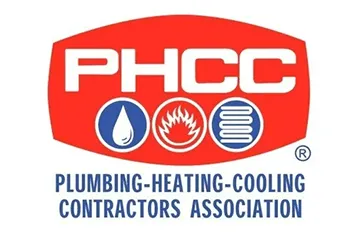Rainstorms can be awe-inspiring, but they also bring catastrophic damage to regions all around the world. These powerful events reshape land, cripple businesses, and batter homes. Water infiltrates everything, soaking through roofs, seeping into walls, and flooding your basements. This intense saturation also has a direct and often devastating impact on your home’s plumbing systems. How can a simple downpour cause your pipes to fail and your drains to back up? The connection is closer than you think.
Here Is What Actually Happens to Your Plumbing System When Heavy Rains Arrive
A sudden, intense rainstorm, like the ones that can hit Mount Vernon, WA, places extreme demand on both your home’s plumbing and the municipal water systems. This sudden stress is the root cause of most storm-related plumbing emergencies.
- Sewer System Overload: The public sanitary sewer system is designed to handle waste from homes, not millions of gallons of rainwater. When storm drains get overwhelmed, that excess water floods into the sewer lines. This can reverse the flow, forcing raw sewage back up the pipe and into your home through floor drains, toilets, and showers.
- Intense Pressure on Pipes: Saturated soil around your home becomes heavy and dense. This weight puts a huge amount of pressure on the underground pipes connected to your house. Older pipes can crack or collapse under this strain, leading to leaks or a complete failure.
- Sump Pump Burnout: Your sump pump is your basement’s first line of defense against a flood. During a heavy storm, it runs constantly to pump out groundwater. This continuous operation can cause the motor to overheat and fail, leaving your basement completely vulnerable to severe water damage.
- Debris Infiltration: Stormwater is never clean. It carries silt, leaves, trash, and other debris. This material can easily clog the drains on your property and even work its way into larger sewer pipes, creating blockages that lead to backups.
Give Your Sump Pump a Pre-Storm Check-Up to Prevent a Catastrophic Basement Flood
Your sump pump is an amazing system for your basement, but it can’t protect your home if it isn’t working correctly. Before the storm season hits, you should give it a quick test. This simple action can save you from a major flood and expensive water damage repairs.
Simply pour a bucket of water into the sump pit. The pump should kick on automatically, remove the water, and then shut itself off. If it doesn’t activate, or if it struggles to pump the water out, you have a problem.
Also, check that the discharge pipe opening outside is clear of any debris or blockages so the water can flow freely away from your foundation. A failing sump pump is a true plumbing emergency waiting to happen. If you think you need sump pump repairs, give your local plumbers a call!
Keep Gutters and Your Local Storm Drain Clear of Leaves and Debris
This tip is all about controlling the flow of water on your property. Your gutters are meant to catch rainwater and direct it safely away from your house through downspouts. When gutters are packed with leaves and debris, water spills over the sides and pools directly against your foundation.
This pooling water saturates the soil, which creates the pressure we mentioned earlier. It also dramatically increases the amount of water your sump pump has to handle.
Next, check the storm drain on your street and let your city know if it’s clogged. If that drain is covered in leaves, water can’t escape your property and will only compound the flood risk for you and your neighbors.
Install a Backwater Prevention Valve to Create a Powerful One-Way Barrier Against Municipal Sewer Backups
You have very little control over the municipal sanitary sewer system. If it gets overwhelmed during a storm, the outcome for your home can be disastrous. A backflow prevention valve is a powerful defense mechanism. This device is installed on your home’s main sewer pipe and acts like a one-way gate.
Under normal conditions, it lets water and sewage flow out of your house. But if water from the overloaded city sewer starts to push back toward your home, the valve’s flap automatically closes. This creates a seal, stopping sewage from flowing back into your basement, toilet, or shower drains. It is one of the most effective ways to stop a sewage backup before it starts.
Reroute Your Air Conditioning Drains and Downspouts So They Don’t Add More Stress to Your Home’s Main Sewer Line
In many older homes, it was common practice to connect everything that drained water directly into the sanitary sewer line. This includes rainwater from downspouts and condensation from your air conditioning unit. This setup puts a huge, unnecessary burden on your home’s plumbing during a storm.
All that extra water adds to the volume inside the sewer pipe, increasing the risk of a backup. Rerouting these lines so they discharge onto the lawn a safe distance from the foundation removes that extra load. It ultimately protects your home and your entire sewer system during a major rain event.
Is Your Plumbing System Compromised After a Storm? Skagit Plumbing Is Ready to Help.
If your plumbing systems are overwhelmed by rainwater, we can help restore order. With advanced techniques and effective plumbing services, we protect your hot water tanks, sump pumps, and pipes from the disastrous effects of a flood. When you face a post-storm plumbing emergency, call us for reliable solutions. And be sure to check out our plumbing maintenance plans to make sure all your systems are ready for the rain ahead!




